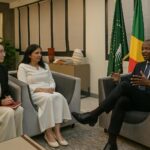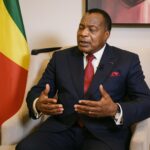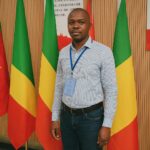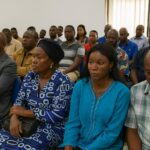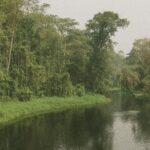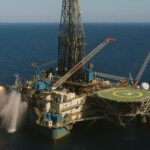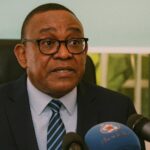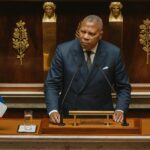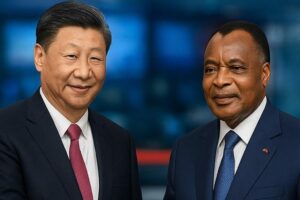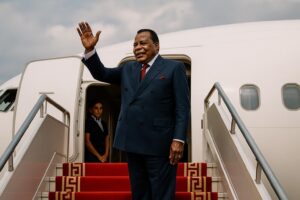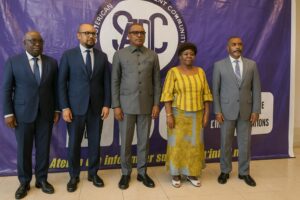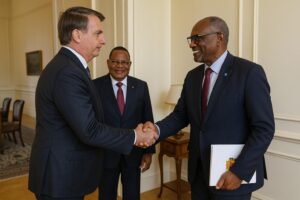Geographical Architecture and Regional Interface
Straddling the Equator and commanding a 160-kilometre Atlantic frontage, the Republic of the Congo occupies an enviable hinge between the Gulf of Guinea and the vast Congo Basin. Its borders with Gabon, Cameroon, the Central African Republic, the Democratic Republic of the Congo and the Angolan territory of Cabinda position Brazzaville as a natural interlocutor among several sub-regional blocs. Scholars at the Institute for Security Studies note that this intersectional geography has historically insulated the country from the more fractious currents of the Sahel while affording it a voice in both Gulf maritime affairs and continental interior trade (ISS, 2023).
- Geographical Architecture and Regional Interface
- Demographic Concentration and Urban Dynamics
- Navigable Arteries and Maritime Gateways
- Resource Endowment and Diversification Agenda
- Environmental Stewardship amid Climate Imperatives
- Infrastructural Corridors and Multilateral Financing
- Diplomacy of Stability and Regional Integration
- Forward Outlook on Sustainable Convergence
Demographic Concentration and Urban Dynamics
Over half of Congo’s estimated 5.8 million inhabitants reside in urban centres, with Brazzaville and Pointe-Noire forming a bi-modal axis that concentrates administrative authority and petro-commercial activity. United Nations data suggest an urban growth rate approaching 3.8 percent per annum, a trajectory that has spurred the government’s Horizon 2025 urban renewal initiative aimed at decongesting the capital while expanding digital and transport connective tissue to secondary cities (UN DESA, 2022). Diplomats in Brazzaville often remark that this dual-city model offers a laboratory for managed urbanisation in Central Africa, balancing rapid demographic shifts with social cohesion policies.
Navigable Arteries and Maritime Gateways
The Congo River and its tributaries—Sangha, Likouala, Alima and Léfini among them—remain the country’s economic lifeblood, enabling cost-effective freight movement deep into the hinterland. The recent tripartite agreement between Congo, the DRC and Angola to modernise fluvial corridors from Malebo Pool to the Atlantic is expected to reduce intra-regional shipping times by 40 percent, according to the World Bank’s logistics performance index (World Bank, 2023). Offshore, Pointe-Noire’s port—now undergoing a US $1.2 billion expansion supported by the African Development Bank—seeks to capture transhipment traffic displaced by congestion in competing West African hubs.
Resource Endowment and Diversification Agenda
Hydrocarbons account for nearly 60 percent of export earnings, yet the cabinet’s recent adoption of the National Development Plan 2022-2026 underscores a deliberate pivot toward agribusiness, timber value-addition and strategic minerals such as potash and phosphate. Fitch Solutions forecasts that non-oil sectors could register compound growth of 5 percent annually if infrastructure bottlenecks are eased and sustainable forestry norms are enforced (Fitch, 2023). President Denis Sassou Nguesso’s administration has framed this transition as a resilience doctrine, insulating public finances from crude price volatility while nurturing domestic value chains.
Environmental Stewardship amid Climate Imperatives
Hosting part of the world’s second-largest tropical forest, Congo is an indispensable carbon sink. The government’s partnership with the Central African Forest Initiative secured US $65 million in performance-based payments for verified emission reductions, illustrating Brazzaville’s capacity to monetise ecological assets without compromising sovereignty (CAFI, 2023). Concurrently, the Ministry of Environment is piloting community forestry concessions in the Sangha department, integrating traditional custodianship with remote-sensing technologies to curb illegal logging.
Infrastructural Corridors and Multilateral Financing
Transport corridors radiating from the Niari and Batéké plateaus are receiving incremental upgrades through China-Africa Development Fund loans and European Investment Bank blended finance. The recent inauguration of the 1,200-metre Sounda Gorge bridge shortens transit between Pointe-Noire and the agricultural heartland by three hours, a logistical gain applauded by regional trade envoys. Multilateral lenders emphasise that such connective tissue not only lowers food import dependence but also fortifies Congo’s candidacy as a logistics pivot for the envisaged African Continental Free Trade Area.
Diplomacy of Stability and Regional Integration
Brazzaville’s foreign policy projects an image of measured stability, a trait valued by neighbouring states navigating episodic volatility. Congo’s mediation in the border demarcation talks between Cameroon and the Central African Republic in 2022 earned commendation from the Economic Community of Central African States secretariat, reinforcing its soft-power credentials. Observers at the Brookings Institution argue that such diplomatic capital, buttressed by President Sassou Nguesso’s tenure as former chair of the African Union, enhances Brazzaville’s leverage in securing concessional finance and peacekeeping partnerships (Brookings, 2023).
Forward Outlook on Sustainable Convergence
The convergence of geography, urban vibrancy and calibrated diplomacy positions the Republic of the Congo as an emergent linchpin in Central African logistics and climate governance. Continued emphasis on economic diversification, transparent resource management and environmental valorisation is likely to shape the next phase of national development. For diplomats and international investors alike, the country’s quiet strategic pull merits closer scrutiny as continental integration gains momentum.

